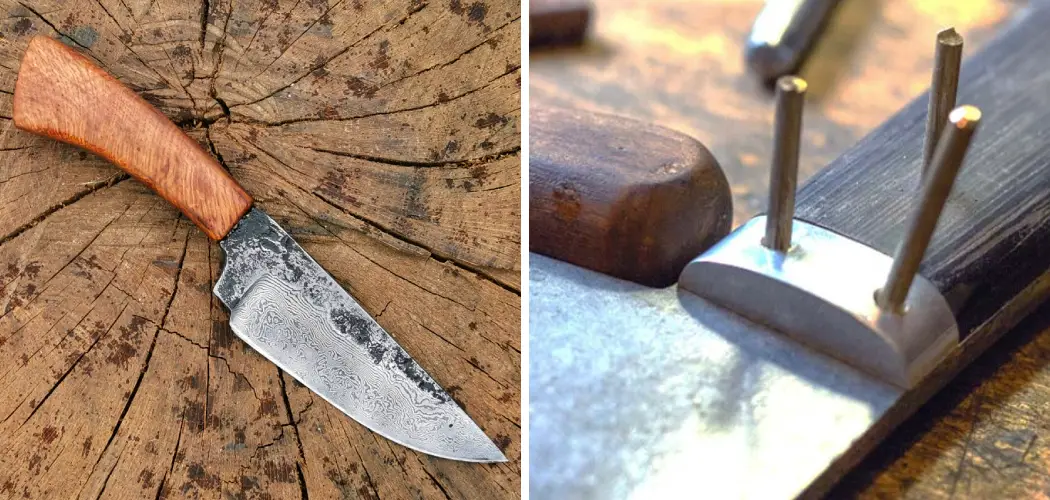There’s nothing like a well-made knife. The weight in your hand, the sharpness of the blade – it feels like an extension of yourself. But a knife that isn’t properly taken care of is nothing but a danger to you and those around you. In this article, we’re going to show you how to tighten rivets on a knife, so it stays in good condition for years to come. So keep reading to learn more!
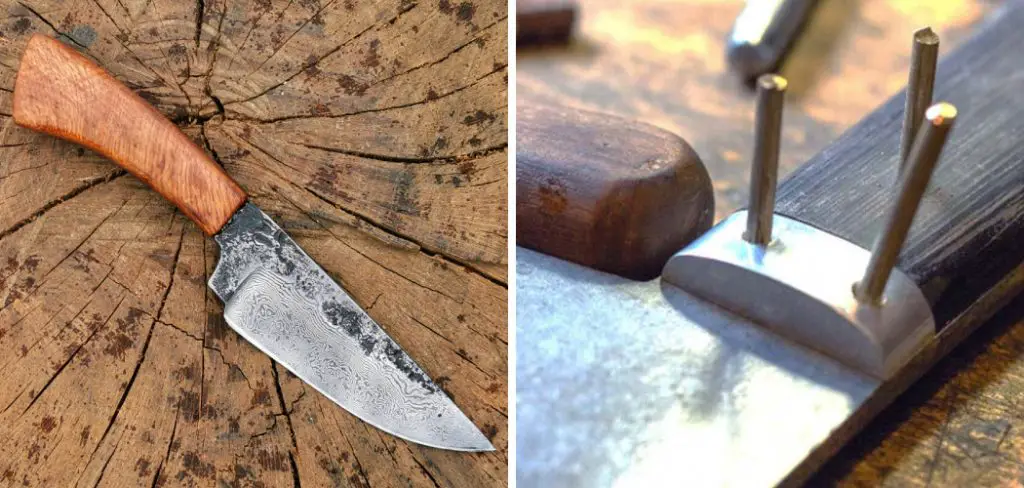
The knife is one of man’s oldest and most essential tools. An adequately maintained knife can last for generations, but a neglected knife will quickly become dull and dangerous. Taking care of your knife is tightening the rivets that hold the blade in place. Over time, these rivets can loosen and even fall out if they’re not properly taken care of. But don’t worry – with a little bit of time and effort, you can easily tighten them up again.
Summary: In this article, we will be discussing how to tighten rivets on a knife. Rivets are used to connect two pieces of metal and are typically tightened with a hammer. However, sometimes the rivet can become loose and needs to be tightened. This tutorial will show you how to tighten a rivet on a knife using a hammer and screwdriver.
What Are Rivets?
A rivet is a metal fastener used to join two or more pieces of material together. It is inserted through holes in the materials and then expanded so that it cannot be removed. Rivets are typically steel or aluminum, although other materials can also be used.
There are two main types of rivets: solid and tubular. Solid rivets are the most common type and are used in various applications, from aircraft construction to jewelry making. Tubular rivets are less common but are often used in applications where a high degree of strength is required, such as bridges construction. In addition, rivets are generally easy to install and require only basic tools, making them a popular choice for many applications.
What Does a Rivet Do on a Knife?
Rivets come in various sizes and shapes, and they can be found on knives, tools, and other metal objects. A typical rivet has a stem inserted through the two pieces of metal to be joined. The stem is then flared or hammered over to create a head that holds the two pieces together.
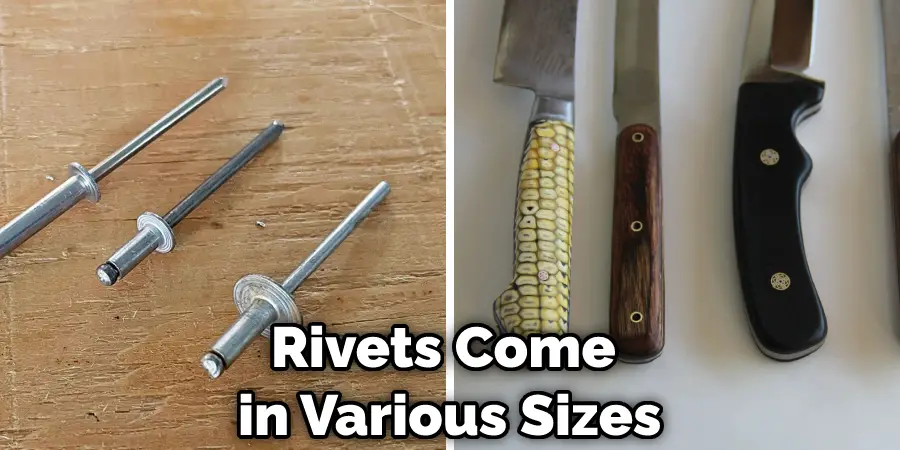
Rivets are strong and durable, and they are often used in applications where other fasteners would fail. In addition to their strength, rivets also have a low profile and can be used in tight spaces. For these reasons, rivets are ideal for joining together the blade and handle of a knife.
If you have a knife with loose rivets, it is essential to tighten them as soon as possible. Loose rivets can cause the blade and handle to become separated, which can be dangerous. In addition, loose rivets can also cause the knife to wobble and vibrate, making it difficult to use. Luckily, tightening rivets on a knife is a relatively straightforward process that can be done at home with a few simple tools.
What You’ll Need
- Rivets
- Ruler or measuring tape
- Marker
- Knife with loose rivets
- Hammer
- Anvil or other hard, flat surface
- Punch (optional)
- File (optional)
A Step by Step Guide on How to Tighten Rivets on a Knife
Step 1: Determine What Cause the Rivets to Become Loose
To properly tighten rivets on your knife, it is essential to determine what caused the rivets to become loose in the first place. There are a few different reasons that this could happen, such as:
- Not enough tension was applied when the rivet was originally installed
- The material the knife is made from has stretched or shrunk (due to changes in temperature or humidity)
- The surface the rivet is sitting on is uneven, causing it to rock back and forth and eventually work itself loose
Once you have determined the cause of the loose rivets, you can take steps to prevent it from happening again in the future. For example, if not enough tension was applied when the rivets were originally installed, you can use a larger or heavier gauge rivet the next time around.
Step 2: Determine The Size of The Rivets You Need
The next step is to determine the size of rivets you need. The most common sizes are 3/32”, 1/8”, 5/32”, and 3/16”. To determine the rivet you need, start by measuring the diameter of the hole in your knife blade. Once you know the diameter of the hole, add 1/16” to that measurement to account for the thickness of the material the rivet will be passing through. For example, if the diameter of the hole in your knife blade is 1/8”, you would need a 5/32” rivet.
Step 3: Remove The Old Rivet
Once you have the new rivets, it’s time to remove the old ones. Start by using a punch or other sharp object to drive the old rivet out of the hole. If the old rivet is challenging to remove, you can use a file to enlarge the hole slightly. However, be careful not to enlarge the hole too much, as this could cause problems when installing the new rivet.
Step 4: Place The Knife Blade On An Anvil Or Other Hard, Flat Surface
Now it’s time to install the new rivets. Start by placing the knife blade on an anvil or other hard, flat surface. This will provide a stable surface to work on and help to prevent the blade from moving around while you’re working.
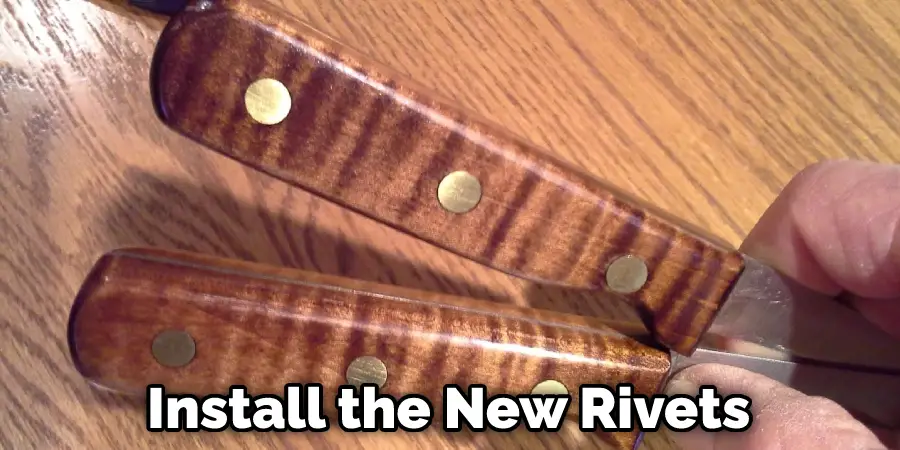
Step 5: Insert The Rivet Into The Hole
Once the blade is in place, please take one of the new rivets and insert it into the hole. Make sure that the head of the rivet is on the same side as the handle of the knife. If it isn’t, flip the knife over and try again.
Step 6: Use A Hammer To Drive The Rivet Through The Blade
Once the rivet is in place, use a hammer to drive it through the blade. Start by striking the head of the rivet lightly with the hammer. Once the rivet has started to pass through the blade, you can increase the force of your swings. Continue striking the rivet until it emerges from the other side of the blade.
Step 7: Trim The Excess Rivet Material
Once the rivet has been driven through the blade, a small amount of excess material will stick out from each side. Use a sharp pair of scissors or wire cutters to trim this excess material down flush with the blade’s surface.
Step 8: Use A Hammer To Flatten The Rivets
The final step is to use a hammer to flatten the rivets. Start by holding the knife blade in one hand and striking the head of the rivet with the hammer. Once the rivet is flat on one side, flip the blade over and repeat the process on the other side.
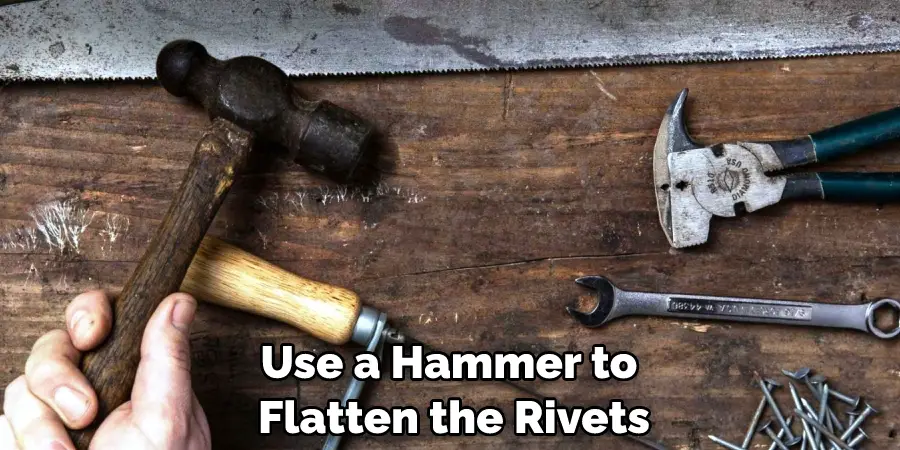
And that’s it! You’ve now successfully tightened the rivets on your knife. Just check them to ensure they remain tight and secure regularly.
Tips and Tricks
- If the blade is not centered when you look down at the knife, it is most likely that the rivets are loose.
- You can use a washer or even a piece of cardboard to help keep the rivet tight while you’re tightening it.
- When using a washer, make sure that it’s the same size as the rivet head so that it doesn’t slip off.
- It’s also helpful to have someone hold the other side of the knife while tightening the rivet. This will prevent the blade from moving around and make it difficult to tighten the rivet.
- If you don’t have anyone to help you, you can try clamping the blade in a vise or using a C-clamp to hold it in place.
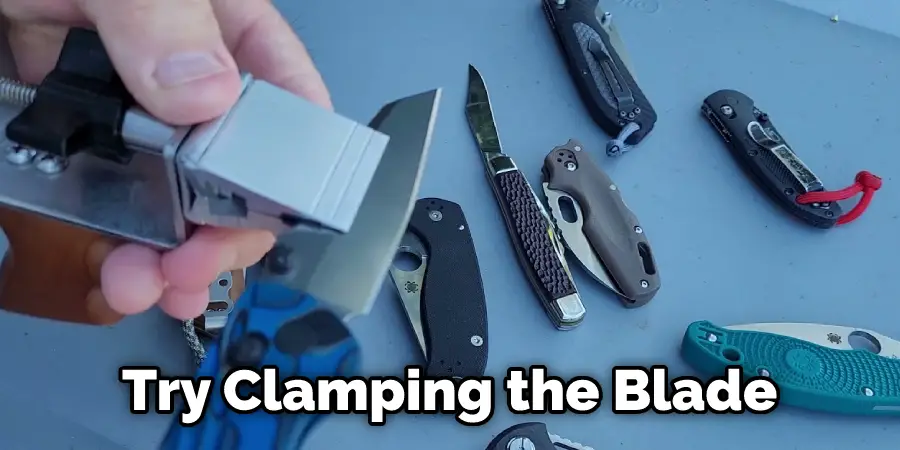
- Tightening rivets is a simple process, but it’s essential to ensure they’re tight enough. If they’re too loose, the blade will be able to move around and potentially come loose. On the other hand, if they’re too tight, you run the risk of breaking the blade or the handle.
- The best way to know if the rivet is tight enough is to try and wiggle the blade. If it moves at all, then it’s not tight enough. If it doesn’t move, you’ve probably tightened it too much, and you should back off a bit.
Benefits of Having Tight Rivets on Your Knives
There are many benefits of having tight rivets on your knives. The first benefit is that it increases the overall strength of the knife. When the rivets are tightened, they create a more secure bond between the blade and handle. This means that the knife will be less likely to break when the blade and handle meet.
Another benefit of tight rivets is that they make the knife more comfortable. When the rivets are tightened, they remove any gaps between the blade and handle. This makes it easier for your hand to grip the knife comfortably and reduces the risk of your hand slipping while using the knife.
Finally, tight rivets also give the knife a more finished look. This is because when they are tightened, the rivets become flush with the surface of the knife. This provides the knife with a cleaner and more professional appearance.
Overall, there are many benefits to having tight rivets on your knives. Tightening the rivets will increase the overall strength of the knife, make it more comfortable to use, and give it a more finished look.
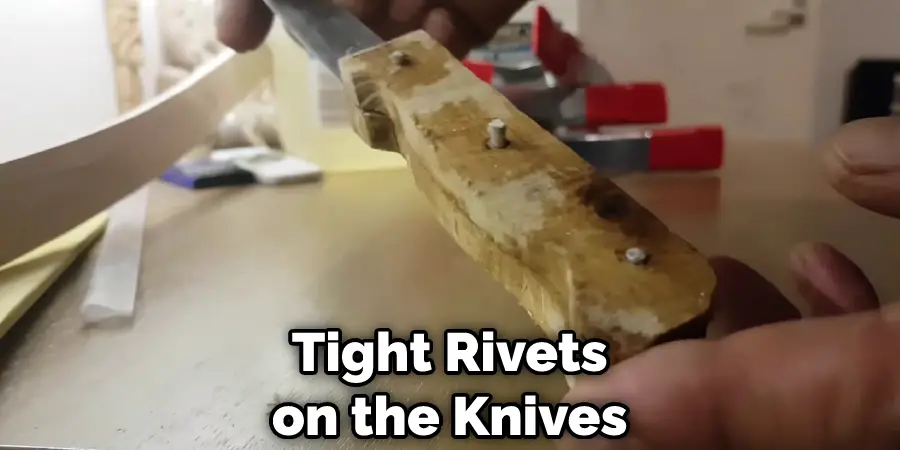
Are Rivets Good in Knives?
Rivets are often seen as a good choice for knife construction. This is because they offer excellent strength and durability, making them ideal for knives. Riveting also allows for more precise craftsmanship than other methods of joining metal components. When done properly, rivets create tight joints that can handle heavy use and abuse without coming loose or breaking.
Are Rivets Stronger Than Screws?
Rivets are a popular choice for knife handles due to their stronghold and low profile. While rivets are often considered to be stronger than screws, the truth is that it depends on the situation. Generally speaking, rivets create a permanent bond that cannot be undone without damaging materials. This makes them ideal for applications where strength and stability are paramount.
What rivets are used on knife handles?
Rivets are a common fastening device used on knife handles, and they are usually made of steel. The most common type is the round-head rivet, which has a head that is slightly larger than its body. This type of rivet has a higher strength-to-weight ratio, making it ideal for applications where there is a need for strength.
To install the rivet, first make sure that the handle material is secure and will not move during installation. Insert the rivet into the hole in the handle material and position it so that the head of the rivet is flush with the surface. Then, using a hammer or mallet, strike down on the head of the rivet to drive it into place.
Conclusion
So, there you have it, how to tighten rivets on a knife. To tighten rivets on a knife, you will need the following tools: a hammer, anvil, and rivet setter. The steps are as follows: place the knife on the anvil with the bolster (metal piece between blade and handle) facing up; hold the rivet in one hand and hit it with the hammer until it is flush with the surface of the knife;
Use the rivet setter to push down on top of the rivet to crimp it into place. If you follow these simple steps, you will be able to repair or replace rivets on your knife in no time!
You May Also Read: How to Clean Wood After Stripping Paint

